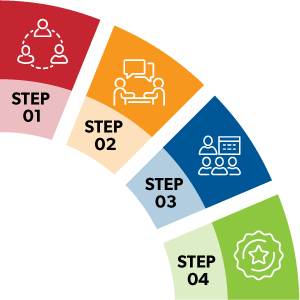Change Your Legal Department’s Perception in 8 Steps
Here are eight powerful ways to set the wheels of transformation in motion:


Step 1
Define, or redefine, your team's purpose and mission (beyond mitigating legal risk).
A mutually understood purpose helps bring team members together with a collective mission and lends meaning and direction to the work they do every day.

Step 2
Instill and promote a customer service mindset.
Your legal team must always view the business as its customer, not its counterpart.

Step 3
Learn the business inside and out.
Every member of the team should be familiar with the company's product offerings and have a solid grasp of its overarching goals, obstacles, risks and competitive landscape. When your team is fully immersed in the business and its vision, your legal support and counsel will be that much more impactful.

Step 4
Deliver responsive, high-quality work.
You want the business to feel confident that when they reach out to your team, they'll have a reliably positive experience. Responsiveness helps cement trust in your legal team and shows clients they can continue to count on you.

Step 5
Communicate clearly and concisely.
Clear communication saves time, reduces conflict and keeps everyone working toward a common goal. Use familiar commercial terms, common industry terms, established organizational acronyms and known financial terms that will resonate with clients.

Step 6
Prioritize your team's workload.
Take a closer look at departmental activity to see exactly what your people are working on every day. Look for inefficiencies or skills gaps that are hindering the team's ability to focus on and execute priority tasks.

Step 7
Help your clients help themselves.
Consider ways to provide the business with self-help tools and resources. Empower the business to take on routine requests like contract review and provide templates to enable automatic generation of preapproved contracts to reduce your team's involvement.

Step 8
Check in with the business regularly.
Develop a process for soliciting regular feedback from clients to gauge customer satisfaction, both structured and informal, to better understand your team's performance and assess any gaps that may exist.